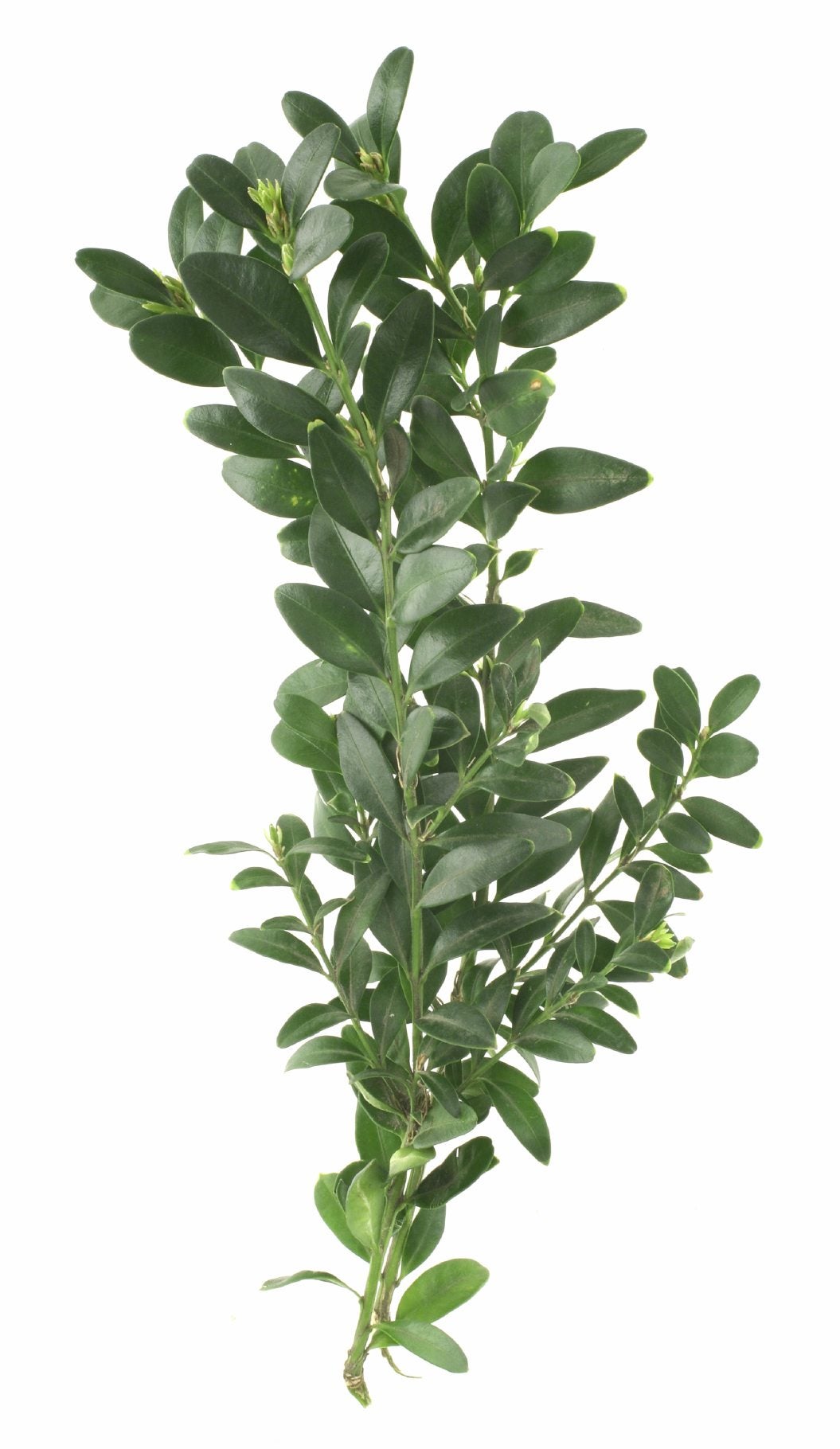Rooting Boxwood Bushes: Growing Boxwood From Cuttings


Boxwoods made their way from Europe to North America in the mid-1600s, and they've been an important part of American landscapes ever since. Used as hedges, edging, screening plants, and accents, you can never have too many. Read on to find out how to get plenty of new shrubs for free by starting boxwood cuttings.
Starting Boxwood Cuttings
Not as easy to start as your average garden perennial, boxwood cuttings require a little time and patience. You'll probably have a few cuttings that refuse to root, so take more than you think you'll need.
Here's what you'll need for starting boxwood cutting propagation:
- A sharp knife
- Rooting hormone
- Large plastic bag with twist-tie
- Pots filled with clean, fresh potting soil
Taking boxwood cuttings in midsummer catches the stems at just the right stage to give you the best chance of success. Cut 3- to 4-inch (7.5 to 10 cm.) tips of new growth with a sharp knife. Pruning shears or scissors pinch the stems and make it hard for them to take up water later on. Only cut healthy stems with no insect damage or discoloration. Successfully rooting boxwood cuttings depends on cutting the tips from healthy, vigorous plants. Stems cut early in the morning root best.
Rooting Boxwood Bushes
The medium you use for rooting boxwood bushes should be clean, low in fertility, and very well-drained. Don't use potting soil, which is rich in nutrients that can encourage rot. If you are going to start a lot of shrubs, you can make your own medium from 1 part clean builder's sand, 1 part peat moss, and 1 part vermiculite. You'll come out ahead buying a small bag of commercial rooting medium if you are only going to start a few.
Remove the leaves from the lower two inches (5 cm.) of each cutting and scrape the bark from one side of the exposed stem. Roll the lower end of the cutting in powdered rooting hormone and tap the stem to remove the excess. Stick the lower end of the cutting where the leaves were removed about two inches (5 cm.) into the rooting medium. Firm the medium around the stem just enough to make it stand up straight. You can place three cuttings in a 6-inch (15 cm.) pot.
Place the pot in a plastic bag and close the top to create a moist environment for the plant. Open the bag daily to mist the stem and check the soil for moisture. After about three weeks, give the stem a little tug once a week to see if it has roots. Once it roots, remove the pot from the bag.
Gardening tips, videos, info and more delivered right to your inbox!
Sign up for the Gardening Know How newsletter today and receive a free copy of our e-book "How to Grow Delicious Tomatoes".
Repot rooted plants into individual pots with good quality potting soil. It is essential to repot the plants as soon as they begin growing to prevent the roots from becoming tangled and to provide them with nutrient-rich soil. A good potting soil has enough nutrients to support the plant until you are ready to set it outside. Continue growing the new plants in a sunny window until spring planting time.
Growing boxwood from cuttings is fun and rewarding. As you learn to propagate some of the more difficult garden plants, you add an extra dimension to your gardening experience.

Jackie Carroll has written over 500 articles for Gardening Know How on a wide range of topics.
-
 Looking For Plants To Give You The Soft And Fuzzies? Try These 5 Fuzzy Leaf Plant Options
Looking For Plants To Give You The Soft And Fuzzies? Try These 5 Fuzzy Leaf Plant OptionsLovers of texture, drama, silver foliage and tactile plants will adore these special sensory garden additions. These fuzzy leaf plant options will leave you all aglow
By Susan Albert
-
 Get Ready For A Summer Of Hummers! Grow These Full Sun Hummingbird Plants and Flowers
Get Ready For A Summer Of Hummers! Grow These Full Sun Hummingbird Plants and FlowersIf you’re lucky enough to enjoy a sunny backyard, make sure you are maxing out on your pollinator opportunities and grow these full sun hummingbird plants and flowers
By Tonya Barnett